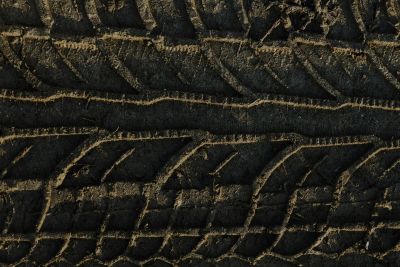
APPLICATIONS
Clearance of landmines and Explosive Remnants of War (ERW).Clearance of landmines and ERW
Mechanical demining machines must be robust, reliable, and capable of handling rough terrain while withstanding explosions from anti-tank and anti-personnel mines. They are essential for clearing anti-personnel and anti-tank land mines and are of utmost utility for disposing Unexploded Explosive Ordnances (UXOs) and Improvised Explosive Devices (IED) during Battle Area Clearance (BAC) operations, requiring the ability to dig and collect these hazards.
FAE’s PT D:MINE Series remote-controlled carriers, equipped with a demining tiller or flail, are designed and certified to neutralize landmines. When equipped with the excavator and manipulator arm with video cameras, they enhance EOD/IEDD, and UXO disposal. Used by NGOs, demining companies, and armed forces, they can operate in harsh environments with steep slopes and dense vegetation, facilitating land restoration for civilian and military use, including farming, housing, and road construction.
DEMINING
Restore land for civilian use by clearing areas contaminated with land mines
Demining plays a crucial role in restoring land for civilian use by clearing areas contaminated with land mines. Through careful detection and removal, demining operations make formerly dangerous land safe for activities like farming, housing development, and infrastructure projects such as road and bridge construction. This process not only ensures the safety of local populations, but also helps revitalize economic opportunities, enabling communities to reclaim their land for agriculture, commerce, and daily life. Demining is essential for post-conflict recovery and long-term stability in affected regions. FAE’s PT D:MINE Series remote-controlled carriers, equipped with a Demining Tiller or Flail, are designed and certified to neutralize landmines.
EOD/IEDD
Restore land for civilian use by clearing areas contaminated with land mines
Explosive Ordinance Disposal (EOD) is the specialized process of safely detecting, identifying, neutralizing, and disposing of explosive threats, such as unexploded ordnance (UXO), improvised explosive devices (IEDs), and other hazardous materials. EOD technicians are highly trained to handle a wide range of explosives, using advanced technology and techniques to prevent harm to people, property, and the environment. Their mission is critical in both military and civilian contexts, ensuring public safety in conflict zones, during terrorist incidents, or after accidents involving munitions. While machines, equipped with the excavator and manipulator arm and fit with advanced camera systems, provide real-time visuals to operators, ensuring accurate assessment and decision-making from a safe distance. This versatility enhances safety, minimizes risks, and supports effective EOD missions in high-threat environments. Ideal for military and humanitarian operations.
BAC
Battle Area Clearance
Battle Area Clearance (BAC) is the systematic process of detecting, removing, and disposing of unexploded ordnance (UXO) and explosive remnants of war (ERW) from former conflict zones. It focuses on clearing large areas, such as battlefields, training grounds, or post-conflict regions, to ensure they are safe for civilian use and redevelopment. Using a combination of manual, mechanical, and technical methods, trained teams sweep the terrain to locate and neutralize hazardous materials. BAC is essential for restoring access to land, enabling reconstruction, and promoting safety in areas previously affected by armed conflict. The use of the PT-300 D:MINE equipped with the FAE 200/U vegetation mulcher provides outstanding ground preparation to boost the productivity of the deminers using the detectors to localize UXOs and ERWs.
CAREFUL
DETECTION
AND REMOVAL


















































